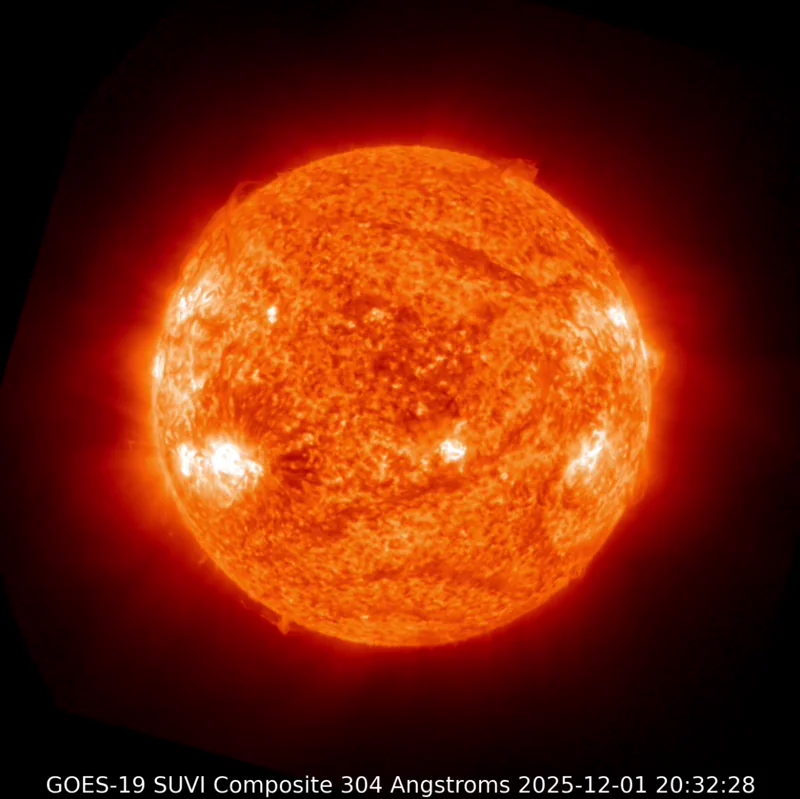
Sun news December 2: Prolific sunspot region returns with a bang!
Today’s top story: A formidable sunspot region has returned! AR4274, the region whose huge blasts in mid-November triggered stunning widespread auroras, has completed its journey round the far side of the sun and has now rotated back onto the Earth-facing solar disk. Now labeled AR4299, this region announced its return yesterday with a powerful X1.9 flare. Some of the sun-stuff fired out in this eruption could give Earth a glancing blow on December 3, bringing the potential for G2 (moderate) geomagnetic storms and auroral displays across higher latitudes. We also saw a huge prominence of solar material rising out from this region yesterday evening, but most of this plasma returned to the solar surface.
Past 24 hours: The details
(11 UTC December 1 – 11 UTC December 2)
- Flare activity: Following the excitement of yesterday morning’s X flare, solar activity dropped to low levels, with the production of only C-class (common) flares over the past 24 hours.
- Strongest flare: A C4.8 flare from AR4294 in the northeast. The blast occurred at 21:54 UTC on December 1.
- Lead flare producer: AR4294 (beta-gamma-delta) topped the list of flare producers with seven C-class flares.
- Other notable C flares: From AR4294: a C3.5 at 14:23 UTC, a C4.2 at 16:37 UTC, a C3.3 at 19:01 UTC, and a C3.3 at 19:19 UTC – all on December 1. AR4296 produced two C3.9 flares at 5:22 UTC and 5:35 UTC on December 2.
- Sunspot regions: Currently the sun shows nine numbered active regions on its Earth-facing side.
- AR4294 (beta-gamma-delta) continues to show a magnetically complex configuration. It is the largest region and the lead flare producer of the past day, though it produced only C-class flares.
- The incoming region in the northeast that produced yesterday’s X flare is now numbered AR4299 (beta-gamma-delta). As it moved into a better position for analysis, specialists identified it as the return of former AR4274, which showed notable flare and coronal mass ejection (CME) production during its last transit on the Earth-facing side and while on the far side.
- AR4296 (beta-gamma) moved into a better viewing position and upgraded in magnetic complexity. It is large in size, and together with nearby AR4294 and AR4298, it forms an extended active complex on the southeast disk.
- The remaining regions are smaller and appear more magnetically simple, though several contributed C-class flares during the period.
- Three newcomers were numbered during the period: the returning AR4299 in the northeast, plus AR4297 (beta) in the southwest and AR4298 (alpha) in the southeast.
- Blasts from the sun? The CMEs observed during the X1.9 (strong) flare mostly headed northeast. Because the event appeared as a semi-halo in coronagraph imagery, computer models indicate a glancing blow may reach Earth late on December 3. No other Earth-bound CMEs were observed.
- Solar wind: Solar wind levels gradually decreased from 500 km/s to near 386 km/s by 11 UTC on December 2. The interplanetary magnetic field (IMF) remained weak to moderate, with total field strength between 5–6 nT. The Bz component was mostly oriented south during much of the period. At the end of the period, it remains southward.
- Earth’s magnetic field: Earth’s magnetic field ranged from quiet to unsettled, with Kp values reaching 3. No G-scale geomagnetic storm levels were observed. At the time of this report, Kp = 2, indicating quiet conditions.
What’s ahead? Sun–Earth forecast
- Flare activity forecast: M-class (moderate) flares are likely over December 2–3, primarily from AR4299 and AR4294 with their persistent beta-gamma-delta configurations. A slight chance remains for additional X-class flares, mainly from these two regions, given their demonstrated eruptive potential. As AR4294 rotates toward the west limb and AR4299 moves into a more geoeffective position, Earth-directed eruptions become increasingly possible. Chances for M flares today are 75% and chances for an X flare to occur are 30%.
- Geomagnetic activity forecast:
- December 2: Mostly quiet-to-unsettled conditions expected during the rest of the day today.
- December 3: Active conditions with a chance for G1 (minor) geomagnetic storm levels due to the anticipated onset of influence from a coronal hole high-speed stream. This recurrent feature produced strong to very strong solar winds in early November. Kp values may reach 5–6, with auroras possibly visible from Seattle, Minneapolis, Edinburgh and the Scottish Highlands. Exact arrival timing carries lower-than-average confidence and may extend into December 4. If the coronal hole stream combines with the glancing coronal mass ejection (CME) from the X1.9 flare, brief G2 (moderate) storm levels are possible.
- December 4: If the coronal hole stream arrival is delayed, active or G1–G2 (minor–moderate) storm conditions are possible during this day instead, with Kp 5–6 and a slight chance for Kp 7 at peak.
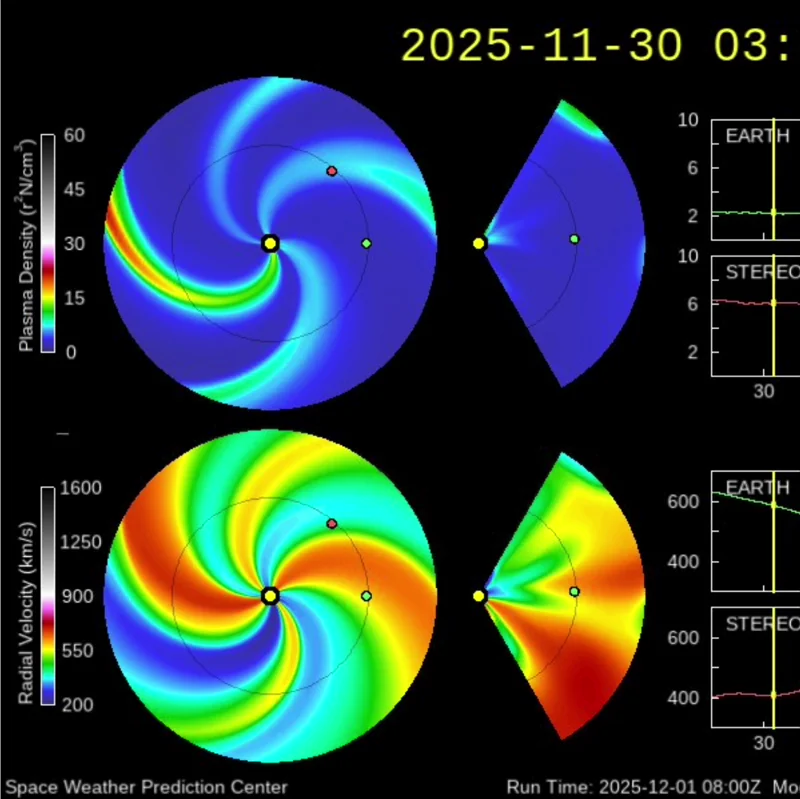
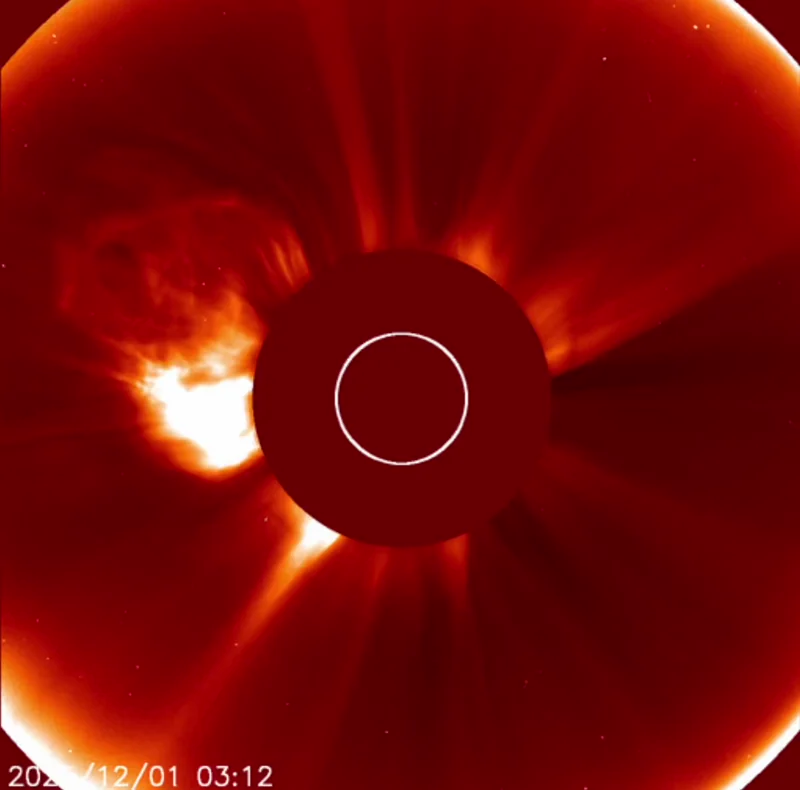
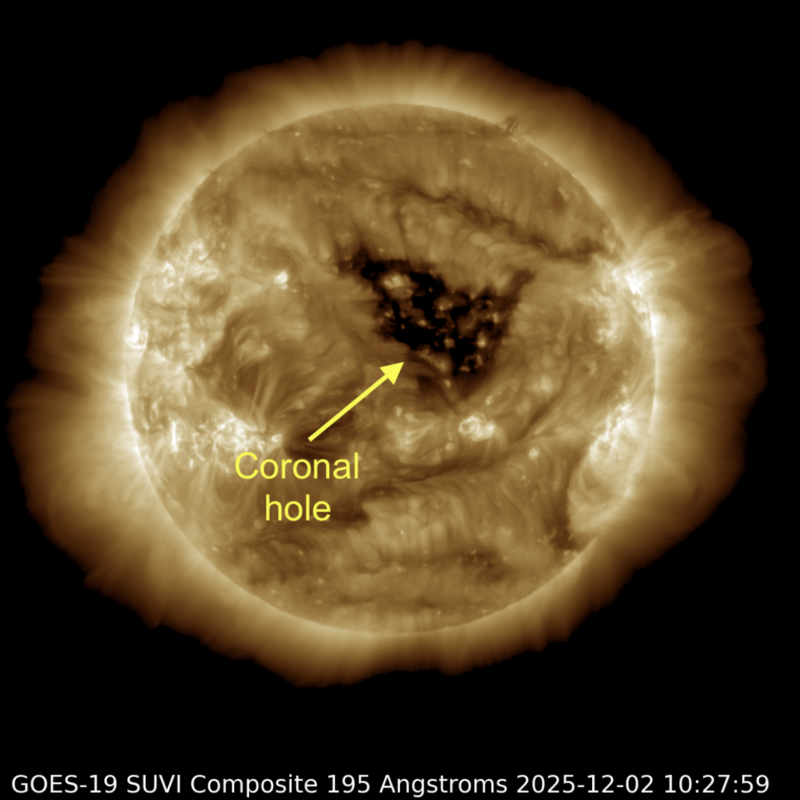

Sun news December 1 (UTC): BAM! X flare from new sunspot region!
The sun has kicked off December in style, exploding with a powerful X1.9 flare at 2:27 UTC this morning and pushing activity to very high. The eruption came from a large region that’s just rotating into view on the northeast horizon, having already produced a C9.0 (common) flare yesterday. All signs indicate this region has significant magnetic complexity, meaning we could see more intense flaring as it continues to turn toward Earth. Stay tuned!
Past 24 hours: The details
(11 UTC November 30 – 11 UTC December 1)
- Flare activity: Solar activity surged to very high with 12 flares observed over the past day, including 1 X flare and 11 C-class flares.
- Strongest flare: X1.9 from an as-yet-unnumbered sunspot region in the northeast at 2:27 UTC on December 1. It triggered an R3 (strong) radio blackout across Australia, affecting aviation communications and maritime radio operations for approximately 30 minutes.
- Lead flare producer: AR4294 (beta-gamma-delta) was responsible for 4 flares, maintaining its status as the most magnetically complex region on the visible disk.
- Other notable C flares: C9.9 at 12:30 UTC on November 30 from an unnumbered region; C9.0 at 10:47 UTC from AR4294; C8.0 at 11:19 UTC from AR4295; C7.9 at 6:16 UTC on December 1 from AR4296; and C7.5 at 13:41 UTC from AR4294. The remaining flares ranged from C4.8 to C6.0, with most originating from AR4294, AR4296, AR4288 and AR4292.
- Sunspot regions: The Earth-facing solar disk displays 9 numbered active regions, 3 of them numbered since the chart below was created. Two large regions dominated the southeast quadrant.
- AR4294 (beta-gamma-delta) persisted as the largest and most magnetically complex region on the disk. It produced most of the C-class activity during the period.
- AR4296 (beta) was newly numbered during the period and is large in size, though less magnetically complex than AR4294. It produced a notable C7.9 flare.
- A near-horizon region rotated into view during the period and immediately demonstrated significant eruptive potential with the X1.9 flare. It’s too close to the horizon for specialists to be sure about its magnetic configuration, but it contains many mature spots.
- The remaining regions – AR4288, AR4292, AR4295, and others – are smaller and appear more magnetically simple, though several contributed C-class flares during the period.
- Blasts from the sun? No Earth-directed coronal mass ejections (CMEs) were observed in available coronagraph imagery during the period. Occasional CME activity was noted near the east limb, likely associated with the X1.9 flare and activity from the new incoming region, but none showed a clear Earth-directed trajectory. Analysis of any potential Earth-affecting components is ongoing.
- Solar wind: Solar wind levels dropped from approximately 625 km/s to near 525 km/s by the end of the period thanks to waning influence from a coronal hole. The interplanetary magnetic field (IMF) remained weak to moderate, with total field strength between 5–6 nT. The Bz component was primarily oriented southward during much of the period, which helped sustain modest geomagnetic activity despite declining wind speeds.
- Earth’s magnetic field: Earth’s magnetic field ranged from quiet to active levels, with Kp values reaching 4 during the period under waning positive polarity coronal hole high-speed stream influences. No G-scale geomagnetic storm levels were observed. Current Kp at the time of this report is 2, indicating quiet conditions.
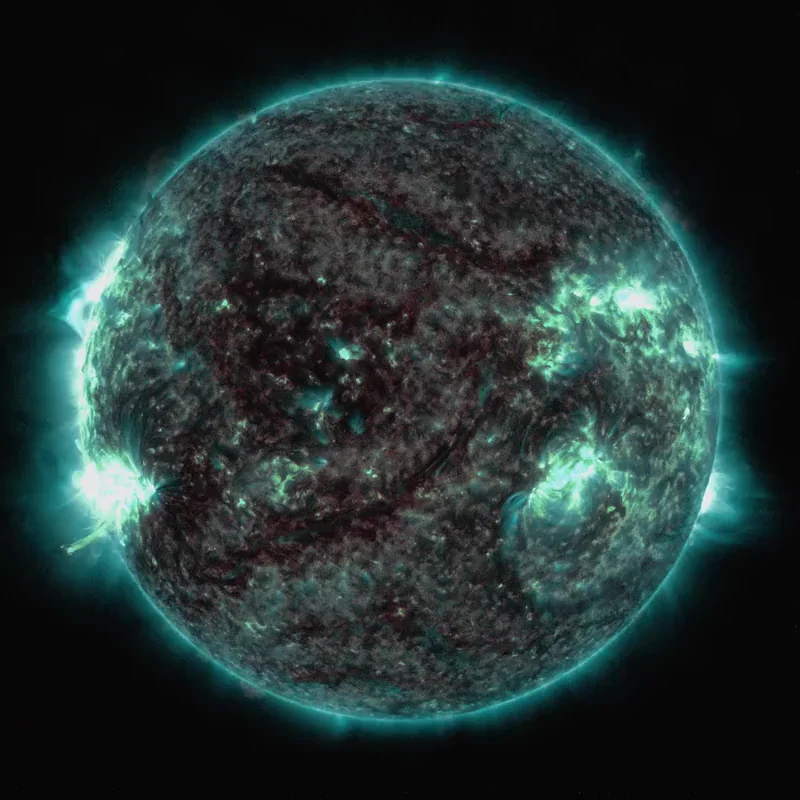
The sun in recent days
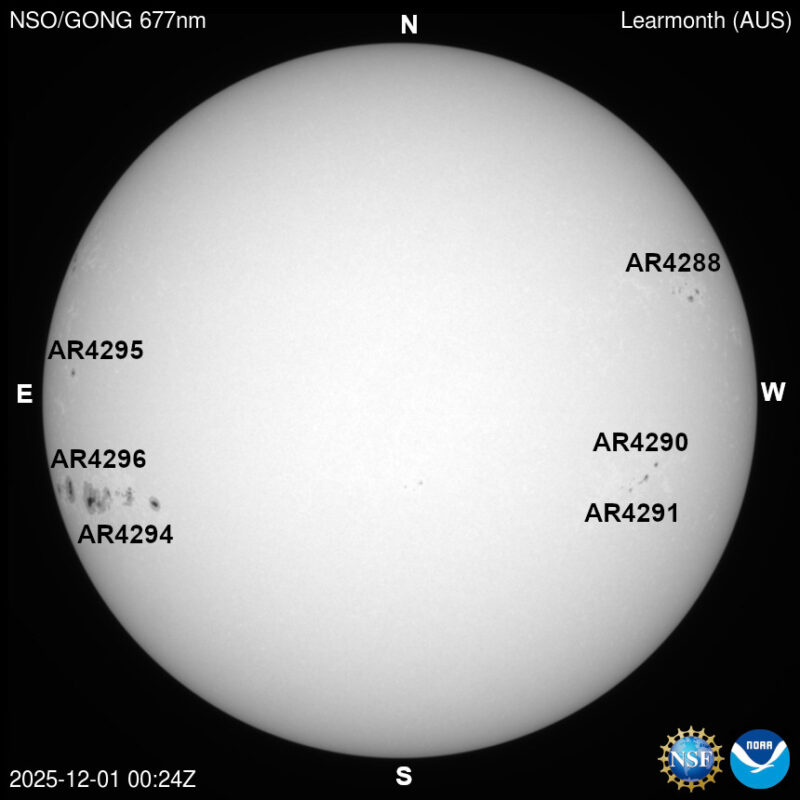
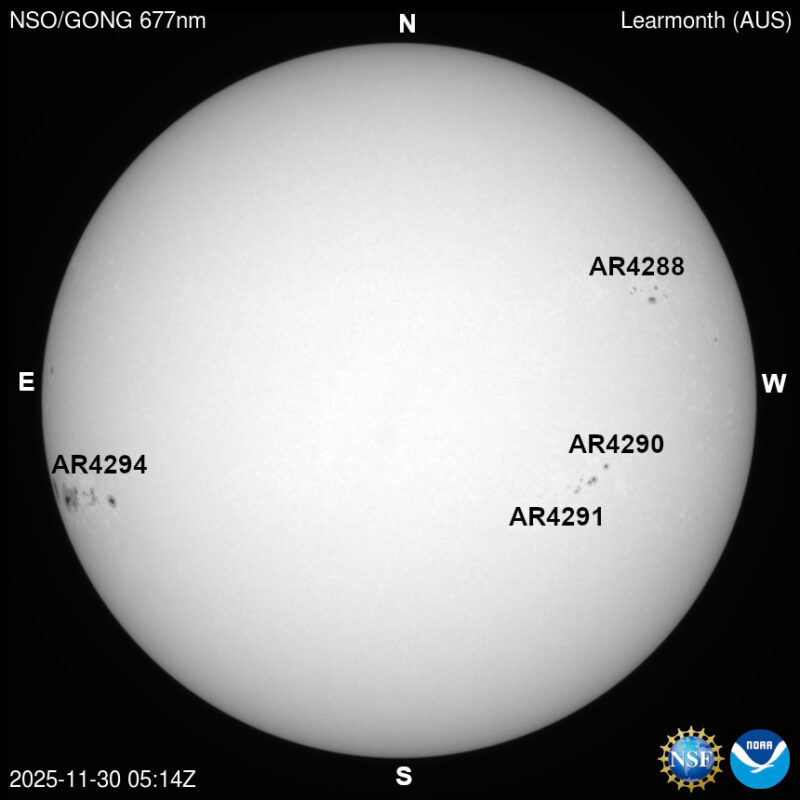
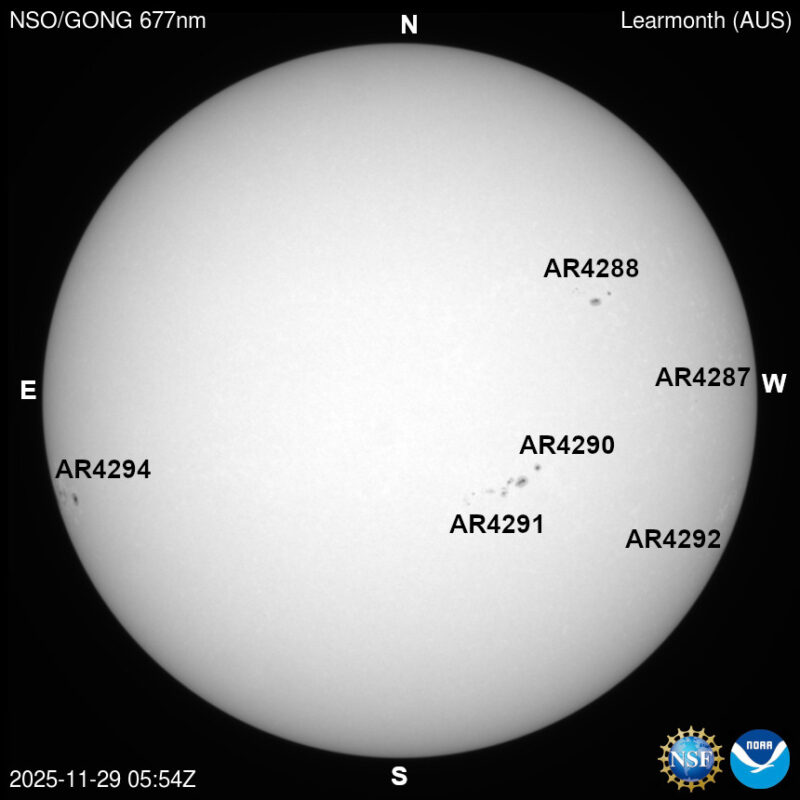
Sun images from our community
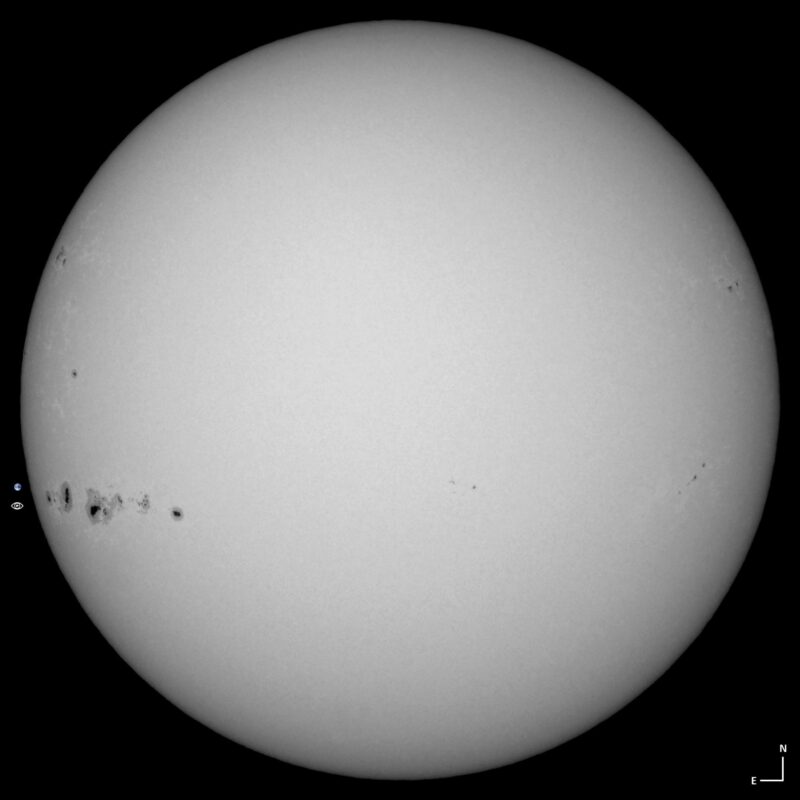

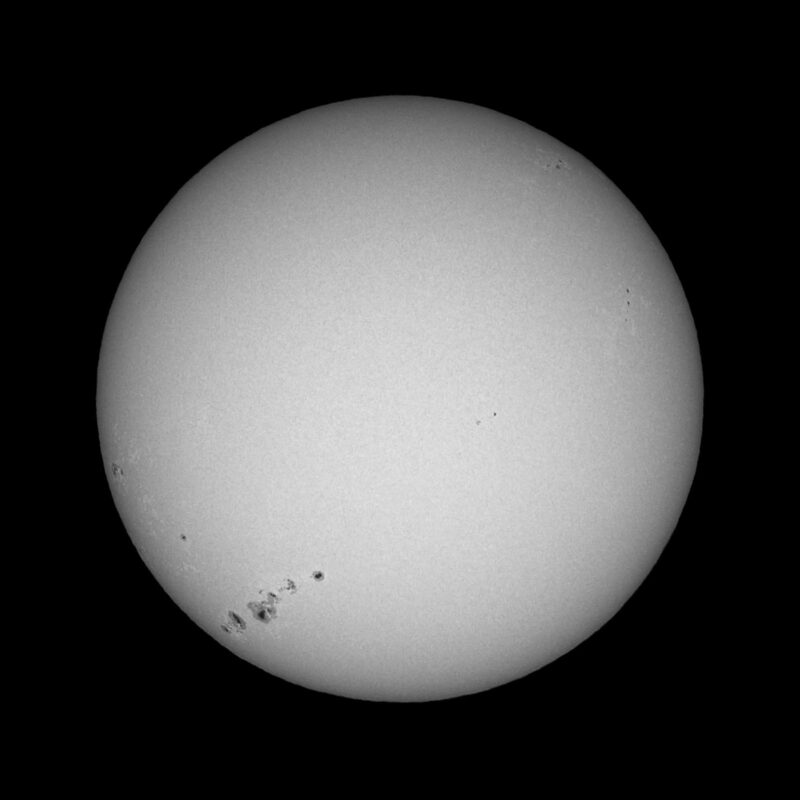
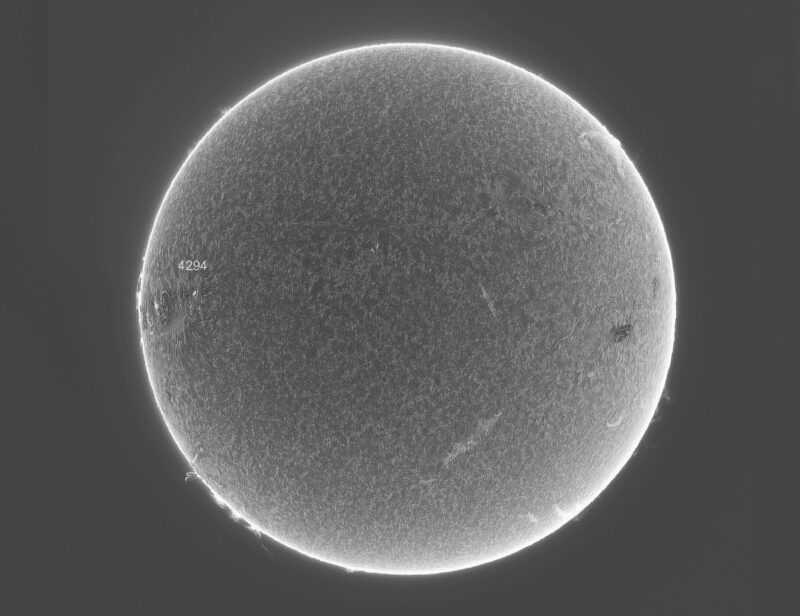
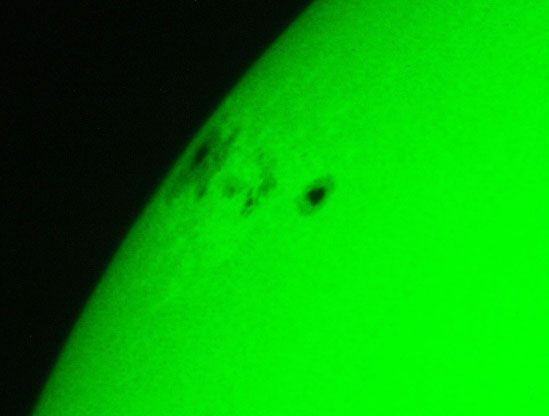
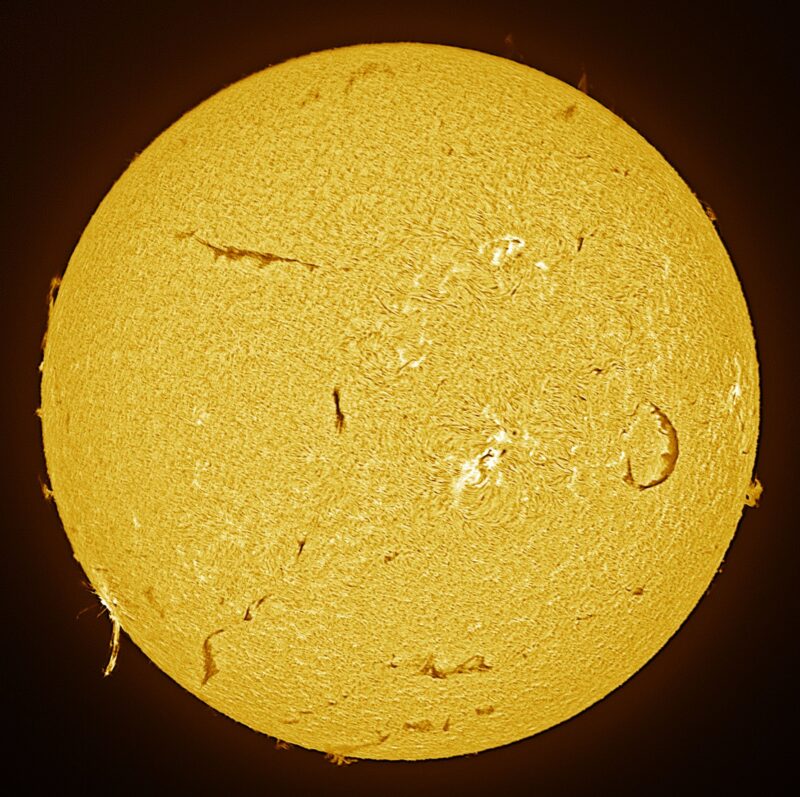
We sometimes feature sun images obtained using hydrogen-alpha filters. Read why.
Bottom line: Sun news December 2: Yesterday’s X1.9 (strong) flare came from the sunspot formerly known as AR4274, which triggered the stunning widespread auroras of mid-November. Sun-stuff from this blast could bring auroras tomorrow.











